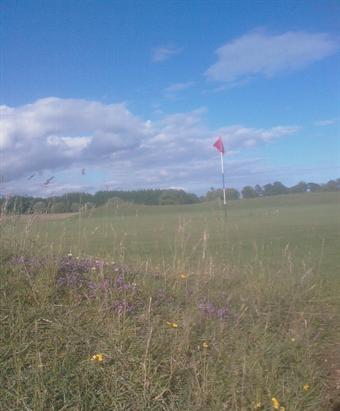The Riches of Nature on Golf Courses
In countries where there is relatively little remaining natural or semi-natural land, the areas that are set aside for recreational exercise provide an opportunity to benefit nature. Routes for walking, running, cycling and horse-riding are potential wildlife corridors, while larger areas can maintain populations of species that would not otherwise survive locally.

Golf-courses can provide useful semi-natural habitat
Golf courses provide perfect opportunities to provide semi-natural habitats. Well-managed landscapes can be pleasant views as well as demanding greater skill when playing. Rough areas can become extremely rich in natural vegetation if mown or grazed knowledgeably. Sand bunkers can provide breeding habitat for some reptiles and invertebrates, while water features become small aquatic ecosystems. Even the close-mown areas can provide good foraging for some bird species.
The Audubon Society, which is based in the United States, has a Cooperative Sanctuary Program for golf courses and has extended this to Europe. In Portugal, a fine example is the Oltavos Dunes course, where the creation of standing water and the restoration of endangered plant species after clearance of alien species have been important. A new candidate for certification is a project on the ancient House of Bragança estates: the Herdade de Roncão d'el- Rei has a strong commitment to positive impacts on local nature and job creation.
On the Web
Read more about the Audubon International certification program for golf courses, the Partnership for the Environment Program and Schools, Green Leaf ratings and other Audubon International certification schemes.